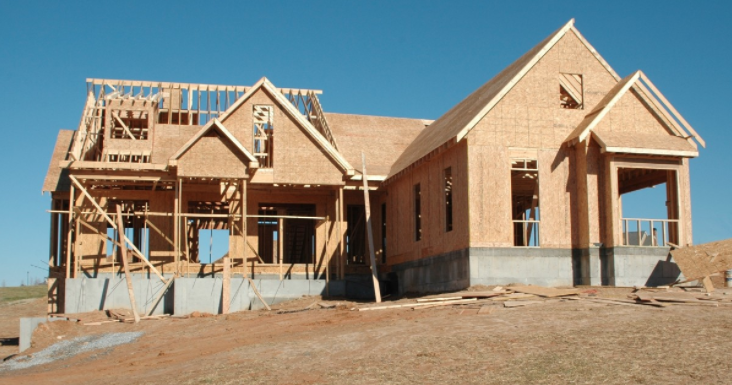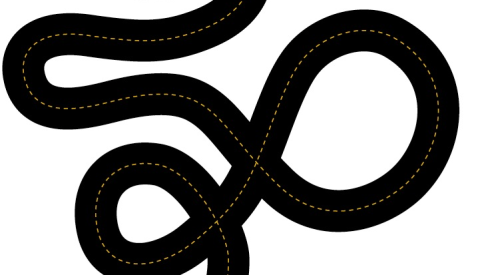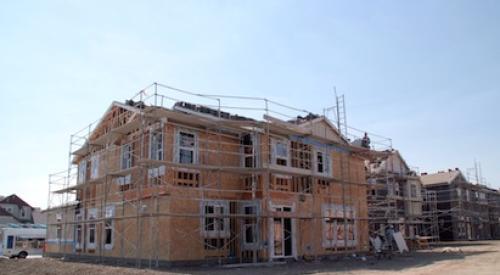The first of this two-part series addresses the evolution of quality management in home building over the past three decades and provides a model to determine where you stand in your own quality journey. Part two in the March issue examines the higher levels of quality management and how builders have responded to the changes in expectations, balancing customer needs with the new reality of building during a housing recession.
In the late 1970s, Ford introduced the Fairmont, a midsize car developed to fend off the burgeoning Japanese competition that was eating the Big Three’s collective lunch. This followed the sad era of the Ford Maverick, Plymouth Duster, and Chevy Vega, which together represented the “worst of Detroit.” Ford bought serious ad time for Super Bowl XIV in 1980 and ran a spot that has stuck with me for more than 30 years. It showed the Fairmont coming down a production line full of happy workers, all smiling and apparently thrilled to be building this new vehicle. At the end of the line, small windows began popping up around the screen, circling the Fairmont, as a machine-like sound fired in the background. Each of the 21 windows displayed a white-coated inspector with a clipboard and checklist in hand. Meanwhile, the narrator of the commercial boasted that each Fairmont went through 21 inspection stations, thus assuring the quality of the vehicle.
The average American in 1980 was no doubt impressed by this. More inspections mean better quality, right? At the time, I was a quality process manager for Motorola, a true pioneer of the quality reformation movement in this country during the 80’s and 90’s. Although young, I had learned enough to know the futility of Ford’s quality-by-inspection approach. We were studying Japanese quality and knew that Toyota, for example, had only three inspectors per line, while 21 was typical for U.S. manufacturers. Ponder that: Ford invested in 18 extra employees and Toyota’s quality still put the Fairmont to shame. How could that be? Hint: it was not the quality of the workers.
I made frequent trips to Motorola’s small Albuquerque, N.M., plant in those days. It served as a test cell for many of our process and quality improvement efforts. On my next trip, following the Super Bowl, I left Hertz in a brand new Ford Fairmont. I had arrived late in the evening and while searching for my hotel I missed a street and had to turn around in a parking lot. During that turn at a normal speed, I hit a small pothole. Wham! The initial sound was followed by a deafening chatter that worsened when I slammed on the brakes. Steam rose out from the grill and a dent formed in the hood, from underneath. Shutdown and further inspection revealed that this minor meet-up with a pothole had completely detached the radiator and fan-shroud assembly from its mounting and sent it into the fan blades, which, in turn, sent the shroud into the hood from below. As I waited for the Hertz tow truck to arrive and return me to the airport to get another car, I ruefully wondered if perhaps 22 inspectors might have prevented this problem.
I have retold that story over the years to illustrate the fallacy of “quality by inspection.” The sad thing is that when I arrived in the home-building industry full-time 23 years ago, inspection-based quality would have been a great leap forward for most builders. Today, 30 years following my Albuquerque incident, virtually all cars — and American autos in particular — have made an order of magnitude improvement in quality. Ford and GM now compete head-to-head with Japanese and Korean brands in surveys such as JD Power and ratings by Consumer Reports, while the European brands struggle to keep up. The Ford Fusion, to mention just one example, was recently cited by Consumer Reports as having better reliability than the Toyota Camry and Honda Accord. Just a decade ago, that was unthinkable. Baby boomers will recall how rarely their parents’ cars made it to 100,000 miles while today it is routine. What changed?
The Rule of 1-10-100
1 = PREVENTION
Every dollar, nickel, penny, or hour spent on prevention of problems is a great investment.
10 = INSPECTION
If you let a problem develop and then find it through inspection, it costs 10 times as many dollars, nickels, pennies, or hours.
100 = FIELD FAILURE
If you let something fail in the field it’s another factor of 10 in time and money.
A simple way to understand the problem with brute force quality comes from a landmark 1959 study at the renowned Bell Labs, the research division of AT&T. Looking at years of data, they devised the “Rule of 1-10-100,” which compares the cost differential with finding problems during inspection and in the field, versus preventing them altogether.
Here’s the kicker: As a percent of income, today’s dramatically better vehicles — with power-everything on even the smallest econobox, great sound systems, electronic controls, and bodies that seem to never rust — cost us about the same as the crummy cars from the 70’s and 80’s. This was not achieved by adding that 22nd inspector. Enter any domestic auto plant today and inspectors are very hard to find.
So how does home building compare? That brings up several tough questions. We have clearly progressed, but as an industry we have not evolved even close to the level of automotive quality, and our costs have increased significantly. As Andy Rooney would have asked, “Why is that?” And what about the impact of the housing recession? Will it erode many of the quality gains that housing made in the past 20 years?
Not long after coming to home building in 1989 as the first person I know of with the title of Vice President of Quality, I was asked to sum up the state of quality in the industry. I called it “brute force quality,” defined as “constant supervision, continual inspection, and mass rework.” It was our industry’s version of traditional “quality control.” Build stuff. Find errors. Fix them with a vengeance. Yes, at the end of the day or perhaps within 30 days after closing, brute force methodology can produce a decent house, but at an incredible cost of time, money, employee morale, and customer satisfaction. Even 20 years ago, I found considerable intellectual buy-in to the idea that there is a better, more effective and less costly way to provide quality. In actual practice, though, few in home building have grown beyond the brute force approach and many have fallen below that level during the housing recession.
The Good, the Bad, and the Ugly
A simple way to understand the problem with brute force quality comes from a landmark 1959 study at the renowned Bell Labs, the research division of AT&T, then the provider of 90 percent of telecommunication equipment in America. Looking at years of data, they devised the “Rule of 1-10-100,” later termed “the good, the bad, and the ugly” by a mentor of mine who is a fan of Clint Eastwood spaghetti-western movies. In this rule, the number 1 equals “prevention.” What the Bell researchers found was that every dollar, nickel, penny, or hour spent on prevention of problems is “good.” The 10 in the rule equals “inspection.” If you let a problem develop and then find it through inspection — meaning “we find and fix” — it costs 10 times as many dollars, nickels, pennies, or hours. Home building has been largely hung up here for 20 years. We believe finding and fixing problems is a good thing. Sure, it’s far better than letting the customer find them, but this brute force approach is so expensive and produces so much baggage that it can only be termed “bad.” Therein lays the first step to growing beyond the most dominant quality model in the business. You cannot stop doing inspections tomorrow, but you have to accept that inspection-based quality is a negative approach.
The Rule of 1-10-100 does not stop there, because if we do not find and fix problems at the inspection level of 10, we now progress to field failure. That’s another factor of 10 in time and money. Field failure thus equals 100 and that is nothing but “ugly.” Of course, these are general rules, and in home building I have seen everything from an anchor bolt in a doorway that calculates as 1-5-20 to a case involving bad soils tests leading to foundation failure in the foothills of Denver that cyphered out to 20,000 – 400,000 – 6,000,000 — and that was just hard cost. That one became a Channel 7 Eyewitness News story, and the impact, including loss of reputation, was immeasurable, taking most of a decade to recover.
To get a handle on genuine quality management and develop the culture and systems to support it, the Rule of 1-10-100 must remain ever-present in our minds. The ultimate answer is prevention of problems, with a lock-tight process for remedy and recovery when things do go wrong, as happens in even the best systems. When managing quality, we tend to develop a plethora of forms, checklists, rules, regulations, and procedures, but each one has to stand up to the question: How is this leading us beyond inspection and rework toward prevention of problems? This is where our time is best spent, because this is where both the quality and the money lie.
As in all effective change processes, step one is to gain an honest understanding of where you are. As Jim Collins wrote more than a decade ago in “Good to Great,” the best companies are those that have the capacity to “face the brutal facts.” Let’s consider the evolution of quality management in phases and see where you stand.
Phase 1: Quality by Rework
This is the time-honored tradition of “fix it after it’s broke,” but it occurs largely as a matter of happenstance rather than through a structured process. Characteristics of builders at this phase include:
- Primitive to no systems for customer call-in, scheduling, and tracking to back up field staff.
- Specific training in quality process or customer management seldom, if ever, seen.
- Good scopes of work with evidence of genuine use in the field or during purchasing are rare.
- Success is wholly dependent on the skill of the local superintendent to spot and diagnose problems and get them repaired or replaced. In some cases, getting things fixed means a substantial toolbox and supplies in the back of a pickup.
- Frequent dependence on a punch-out staff — common here in the U.S. and a particular problem of our friends up north in Canada. This tends to enable and reinforce the poor processes, systems, or workmanship that produced the problems in the first place.
- Almost no feedback or data generated for purposes of continual improvement in product and process.
I have seen both quality and customer service problems remedied at this level through continued heroic efforts of superintendents. The problem is there just aren’t enough heroes to go around. Sooner or later the house is ready, but this approach never meets the needs of the company, because the costs are simply too high.
Phase 2: Quality by Inspection
Many problems stem from inspection-based quality as described in the Rule of 1-1-100 above, yet it is still a significant step forward compared to the random approach of Phase 1. The most common characteristics of Phase 2 include:
- Scopes of work are nearly always present, although typically one-way, and close examination reveals they are rarely used during purchasing negotiations or in the field.
- Training is limited to dealing with upset customers and how to recover when something goes wrong.
- Superintendents spend a great deal of their time going from house to house, inspecting what has been done, what has not, and to what level of acceptability.
- A broad array of checklists for trades or construction phase.
- Considerable buried cost in rework.
- Tremendous activity during the two weeks prior to closing to get the home ready, and significant work during the first 30 days after closing to get the details right.
More advanced stages of this approach transfer checklist responsibility from the superintendents to the suppliers or trades. The great majority of these checklists contain “job complete” type of criteria. Going deeper, you find some builders have progressed to “job ready” checklists for the incoming trade. As always, the proof is if and how they are used. If the job is truly not ready, does the trade have not just the authority but the mandate to stop the line and remedy the problems before proceeding? And is there a managed feedback system to analyze checklist data and use in your continual improvement process? Without that, checklists become just a paper-pushing exercise.
This too is an expensive approach to ensuring quality and drives the back-end “make the customers happy after we honked them off” remedies. The most blatant example I have witnessed was a large builder in Texas that hired and trained a crew of inspectors to conduct phase inspections and customer orientations. These inspectors did their job and turned out voluminous repair and service orders, a result of poor design, a messy option process, late changes, broken processes, and terrible supplier/trade relationships. The obvious solution was to fix the processes and get upstream to eliminate the sources of rework. Instead, they purchased a veritable fleet of shiny black, full-size vans, painted them with huge “customer care team” logos, stocked them with repair material, and sent them across the city, driven by crisply uniformed punch-out guys. That company was one of the first to go under during the housing crash.
Phase 3: Quality by Prevention
On the surface, everyone agrees that prevention is a far superior approach to quality, yet there is one monumental obstacle. When a company spends all of its resources dealing with the 10-times costs of inspection-based quality and the 100-times costs of field failure, it is very hard to spend even a small amount of time figuring out how to prevent problems. One builder had a $350,000 annual service problem with leaks in bathroom tubs and showers. The fix totaled $100,000. A no-brainer, right? Not so fast. The new system required plan changes, working with both suppliers and trades, and educating the city inspectors on a system they had never seen before. All of that takes time, and already short-staffed, implementation was delayed for a year and $250,000 was left on the table. Characteristics of prevention-based quality include:
- A culture, driven from the top, where every member of the team understands the needs of their internal and external customers and takes responsibility for doing it “right the first time”
- Exceptional relationships with suppliers and trades who participate in prevention activities
- Scopes of work are two-way, allowing suppliers and trades to establish what they need to perform at the highest level.
- Every scope contains a clear definition of what represents a 100-percent-complete job.
- Scheduling is like religion — gospel-like in importance and practiced every day
- Feedback loops for all inspection data and field failure are built in, providing essential information for corrective action now and elimination of problems in the future.
- Clean jobsites are a hallmark of the prevention-oriented companies.
- Training in Lean and Six Sigma concepts, even if that terminology is not used per se, is broadly dispersed in the company to where people sweat even the smallest details of quality.
That will get you started, and we will cover more on prevention in the next article, with input from industry-leading builders on what it takes to get there. Yet, perhaps the greatest lesson in recent years is that prevention is not the end of the journey. There is one more level: Phase 4: Quality by Design. We have learned that if the design, including all plans and specifications, is 100 percent right from the onset using detailed input from the key suppliers and trades, at least 50 percent of all quality and process problems that occur downstream are eliminated. The savings in cost, time, and frustration far exceeds the grand sum of every price concession demanded by builders from suppliers and trades over the past five years of the housing recession.
As you are driving around during the next month in that fine vehicle that is safe, efficient, cradles you in comfort, and takes no more of your paycheck than your Dad’s Bonneville did, remember that even the best inspection process cannot create quality in a poorly-designed product. Double the amount of inspectors of a 1980 Fairmont from 21 to 42 and it still would have been a Ford Fairmont. Consider the implications of that while you ponder your own stage in the evolution of quality management and resolve to take the next step forward.
Click to read Part II













